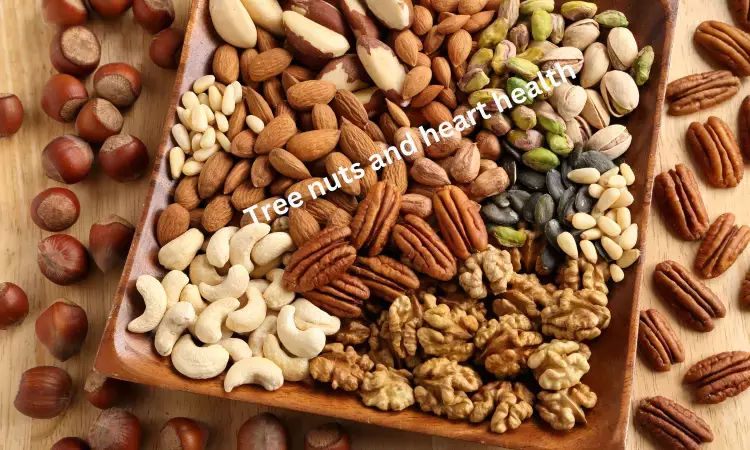- Home
- Medical news & Guidelines
- Anesthesiology
- Cardiology and CTVS
- Critical Care
- Dentistry
- Dermatology
- Diabetes and Endocrinology
- ENT
- Gastroenterology
- Medicine
- Nephrology
- Neurology
- Obstretics-Gynaecology
- Oncology
- Ophthalmology
- Orthopaedics
- Pediatrics-Neonatology
- Psychiatry
- Pulmonology
- Radiology
- Surgery
- Urology
- Laboratory Medicine
- Diet
- Nursing
- Paramedical
- Physiotherapy
- Health news
- Fact Check
- Bone Health Fact Check
- Brain Health Fact Check
- Cancer Related Fact Check
- Child Care Fact Check
- Dental and oral health fact check
- Diabetes and metabolic health fact check
- Diet and Nutrition Fact Check
- Eye and ENT Care Fact Check
- Fitness fact check
- Gut health fact check
- Heart health fact check
- Kidney health fact check
- Medical education fact check
- Men's health fact check
- Respiratory fact check
- Skin and hair care fact check
- Vaccine and Immunization fact check
- Women's health fact check
- AYUSH
- State News
- Andaman and Nicobar Islands
- Andhra Pradesh
- Arunachal Pradesh
- Assam
- Bihar
- Chandigarh
- Chattisgarh
- Dadra and Nagar Haveli
- Daman and Diu
- Delhi
- Goa
- Gujarat
- Haryana
- Himachal Pradesh
- Jammu & Kashmir
- Jharkhand
- Karnataka
- Kerala
- Ladakh
- Lakshadweep
- Madhya Pradesh
- Maharashtra
- Manipur
- Meghalaya
- Mizoram
- Nagaland
- Odisha
- Puducherry
- Punjab
- Rajasthan
- Sikkim
- Tamil Nadu
- Telangana
- Tripura
- Uttar Pradesh
- Uttrakhand
- West Bengal
- Medical Education
- Industry
Tree nuts consumption associated with improved cardiometabolic health outcomes

Tree nuts include a variety of nuts like almonds, Brazil nuts, cashews, hazelnuts, pecans, pistachios and walnuts. Eating nuts are known to be part of a healthy diet and good for the heart as they are rich in unsaturated fatty acids and contain plant protein, fiber, minerals, and phytochemicals such as phytosterols and polyphenols unsaturated fatty acids and other nutrients.
A recent study in Current Developments in Nutrition estimated the usual tree nut intake and examine the association between tree nut consumption and cardiometabolic (CM) health outcomes in a nationally representative sample of US adults.
Lopez- Neyman and team found that though americans were not high tree nut consumers, the ones that consumed had lower BMI, waist circumference and apolipoprotein B vs. nonconsumers. Researchers encouraged health professionals to recommend incorporating tree nuts into patients’ diets.
The researchers conducted a cross-sectional data analysis from a sample of 18,150 adults aged ≥20y who provided at least one reliable 24-hour dietary recall and had complete data for the variables of interest in the NHANES 2011–2018. Tree nut consumers were defined as those consuming ≥¼ ounce/day (7.09 g). The National Cancer Institute Method was used to estimate the usual tree nut intake among consumers. Measurement error calibrated regression models were used to assess the association between tree nut consumption and each health outcome of interest.
The key findings of the study are
• Approximately 8% of all participants (n = 1,238) consumed tree nuts and had a mean ± SE usual intake of 39.5 ± 1.8 g/d.
• Tree nut consumers were less likely to have obesity (31% vs. 40%, P <.001)and low high-density lipoprotein cholesterol (22% vs. 30%, P<.001) compared to non-consumers.
• Moreover, tree nut consumers had a lower mean waist circumference (WC) (97.1 ± 0.7 vs. 100.5 ± 0.3 cm, P<.001) and apolipoprotein B (87.5 ± 1.2 vs. 91.8 ± 0.5 mg/dL, P = .004) than non-consumers.
• After adjusting models for demographics and lifestyle covariates, the difference in WC between average intake (33.7 g/d) and low threshold intake (7.09/g) of tree nuts was -1.42 ± 0.58 cm (P=.005).
The researchers ended that “Most US adults do not consume tree nuts, yet modest consumption was associated with decreased prevalence of CVD and CM risk factors and improvement for some health outcome measures.”
Reference: Lopez-Neyman; Namvar Zohoori, et al; Association of tree nut consumption with cardiovascular disease and cardiometabolic risk factors and health outcomes in US adults: NHANES 2011–2018; DOI:https://doi.org/10.1016/j.cdnut.2023.102007.
MSc. Neuroscience
Niveditha Subramani a MSc. Neuroscience (Faculty of Medicine) graduate from University of Madras, Chennai. Ambitious in Neuro research having worked in motor diseases and neuron apoptosis is interested in more of new upcoming research and their advancement in field of medicine. She has an engrossed skill towards writing and her roles at Medical dialogue include Sr. Content writer. Her news covers new discoveries and updates in field of medicine. She can be reached at editorial@medicaldialogues.in
Dr Kamal Kant Kohli-MBBS, DTCD- a chest specialist with more than 30 years of practice and a flair for writing clinical articles, Dr Kamal Kant Kohli joined Medical Dialogues as a Chief Editor of Medical News. Besides writing articles, as an editor, he proofreads and verifies all the medical content published on Medical Dialogues including those coming from journals, studies,medical conferences,guidelines etc. Email: drkohli@medicaldialogues.in. Contact no. 011-43720751


